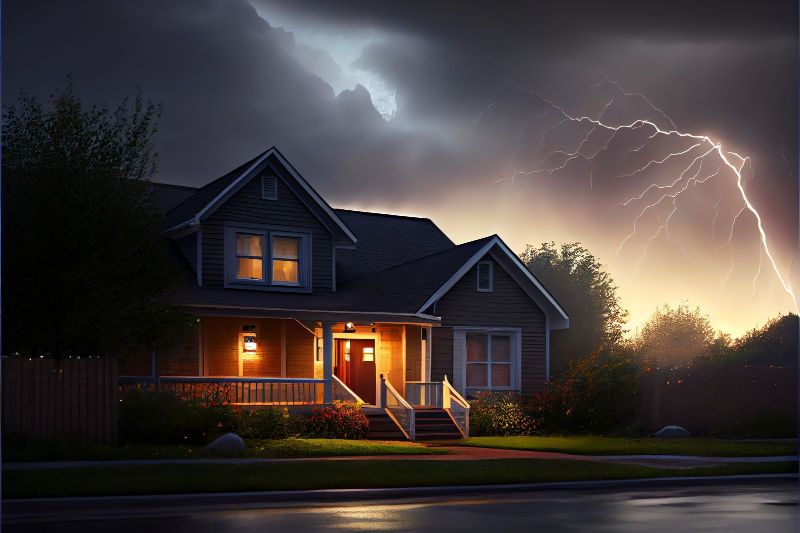Storms can wreak havoc on homes and properties, causing significant damage and leaving homeowners to deal with the aftermath. From strong winds and heavy rain to hail storms and lightning strikes, storms can leave a trail of destruction in their wake. In such situations, it is crucial to handle storm damage effectively to ensure a prompt and efficient restoration process. This article provides valuable tips and guidance on how to handle storm damage and achieve effective restoration.
Ensure Safety First:
Before starting any restoration efforts, it is essential to prioritize safety. Assess the property for potential hazards such as downed power lines, unstable structures, or gas leaks. If you suspect any danger, evacuate the premises immediately and contact the relevant authorities. It's better to be cautious and wait for professionals to assess and mitigate the risks before proceeding.
Document the Damage:
To expedite the insurance claims process and facilitate restoration, it is crucial to document the storm damage thoroughly. Take photographs and videos of the affected areas from multiple angles, capturing both close-up shots and wider views. This visual evidence will serve as valuable proof for insurance purposes and help restoration professionals understand the scope of the damage.
Contact Your Insurance Company:
Notify your insurance company about the storm damage as soon as possible. Follow their guidelines for filing a claim and provide them with the necessary documentation, including photographs, videos, and any other supporting evidence. Be prepared to answer questions about the extent of the damage and provide an accurate description of the incident. Keep track of all communication with your insurance company, including dates, times, and the names of the representatives you speak with.
Secure the Property:
While waiting for professional assistance, it is crucial to secure your property to prevent further damage. Cover any broken windows, tarp damaged roofs, and board up any openings to protect your home from additional water or debris. This temporary protection will help mitigate the risk of further deterioration until the restoration process begins.
Hire Qualified Professionals:
Storm damage restoration is a complex and specialized task that requires the expertise of professionals. Research and hire qualified restoration companies that have experience in dealing with storm-related issues. Ensure that the chosen company is licensed, insured, and has a good reputation. Request references and read customer reviews to gauge their reliability and quality of work. Trusting experts will ensure a thorough and efficient restoration process.
Assess Water Damage:
One common consequence of storms is water damage. Flooding, leaks, and water intrusion can lead to structural damage, mold growth, and other long-term issues. Engage professionals who specialize in water damage restoration to assess the situation and initiate appropriate remediation measures. They will have the necessary equipment and expertise to remove excess water, dry affected areas, and restore your property to a safe and habitable condition.
Address Structural Damage:
Strong winds and falling debris during storms can cause significant structural damage to homes. Conduct a thorough inspection to identify any compromised structural elements such as roofs, walls, or foundations. Engage structural engineers or licensed contractors to assess and repair the damage. Prioritize repairs based on urgency and follow their recommendations to ensure the structural integrity of your property.
Evaluate Electrical Systems:
Storms can damage electrical systems, leading to power outages, electrical malfunctions, or even fire hazards. If you suspect any electrical damage, turn off the main power supply and contact a licensed electrician to inspect the wiring, outlets, and electrical appliances. It is crucial to address any electrical issues promptly to prevent accidents or further damage.
Consider Landscaping Restoration:
Storms can also cause damage to your property's landscaping, including trees, gardens, and outdoor structures. Assess the damage to your landscape and consult with professional landscapers to develop a restoration plan. Remove fallen trees or limbs that pose a safety risk, repair damaged fences or outdoor structures, and replant or rejuvenate your garden as needed. A well-maintained landscape will enhance the overall aesthetic appeal and value of your property.
Handling storm damage effectively is crucial to ensure a prompt and successful restoration process. By prioritizing safety, documenting the damage, contacting your insurance company, securing the property, hiring qualified professionals, addressing water damage, repairing structural issues, evaluating electrical systems, and considering landscaping restoration, you can navigate the aftermath of a storm with confidence. Remember, restoration may take time, but by following these tips, you can regain the comfort and security of your home while minimizing the long-term impact of the storm.

